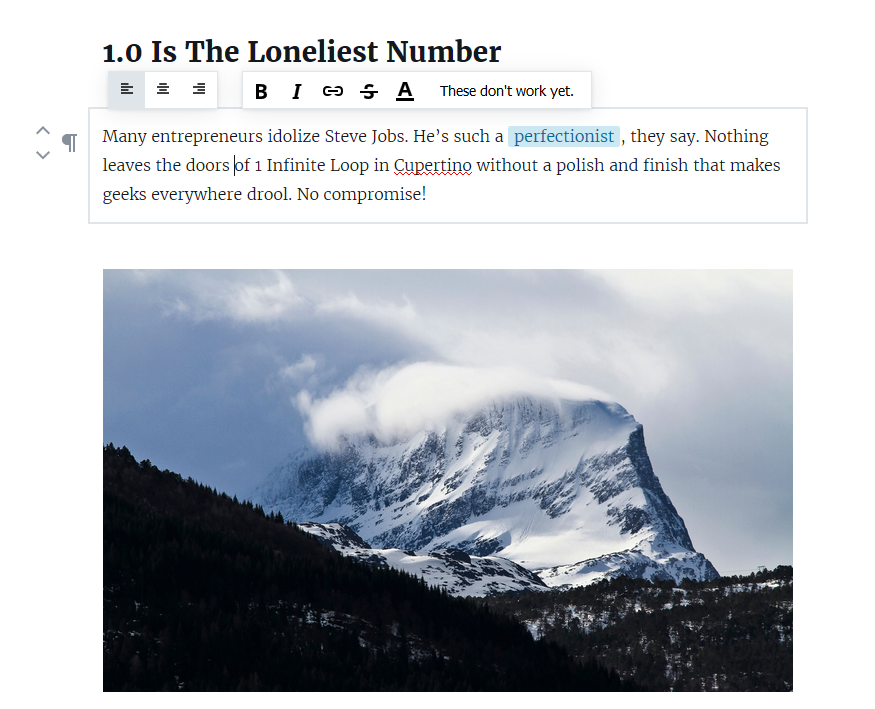In the past few weeks, the WordPress Core Editor team, led by Automattic employees Matías Ventura and Joen Asmussen, have been hard at work creating a new content creation experience. The team recently published a UI prototype for Gutenberg, an experimental block based editor. The editor displays content-specific toolbars when an element is selected and provides a way to move blocks up and down.

While the goal is to reinvent WordPress’ current editor, there’s no guarantee that the prototype will end up as the final product and is in a high state of flux.
“The UI prototype exists mostly to serve as a non-static mockup,” Asmussen said. “It’s like a sandbox we’re building to test some of our mockups and assumptions, to see if they hold water or not. To that extent, it’s already been successful in informing us of things that worked well, and not so well.” The code that powers the editor is made up of about 90% JavaScript.
One of the concerns in revamping the editor is accessibility. Joe Dolson highlighted this concern in a post on the Make WordPress Accessible site. Dolson notes that the accessibility team will work in tandem with the editor team to make the new editor as accessible as possible.
“From an accessibility perspective, this is both an incredible opportunity to build a powerful and flexible experience for all users and an enormous risk that we could end up reducing the effectiveness of the editor for users with disabilities, or require them to use a 2nd-class editor without these enhanced editing capabilities,” Dolson said.
“We in the WordPress accessibility community embrace the challenge of creating a great new experience, and want to assure the community that we are going to do everything we can to make sure that any new editor experience is as accessible as we can possibly make it.”
Although the prototype’s functionality is limited, the team is interested to hear about your experience and expectations with using the editor. Some questions to consider during testing include:
- Talk through each step, what does this do?
- What does this feel like?
- As you use it, what is missing you feel should be there?
Many users have already shared their experiences, providing valuable insight that is fueling rapid improvements to the project on GitHub.
The best way to get involved and contribute to this project is to subscribe to the Make WordPress Design blog and provide feedback by commenting on posts. You can also submit pull requests or issues on GitHub. Weekly meetings dedicated to the Editor component are held on Wednesday at 19:00 CET on Slack in the #core-editor channel.
Congratulations to the WordPress Core Editor team who have done a great job on this so far. It’s looking really good. Can’t wait to see how this matures.